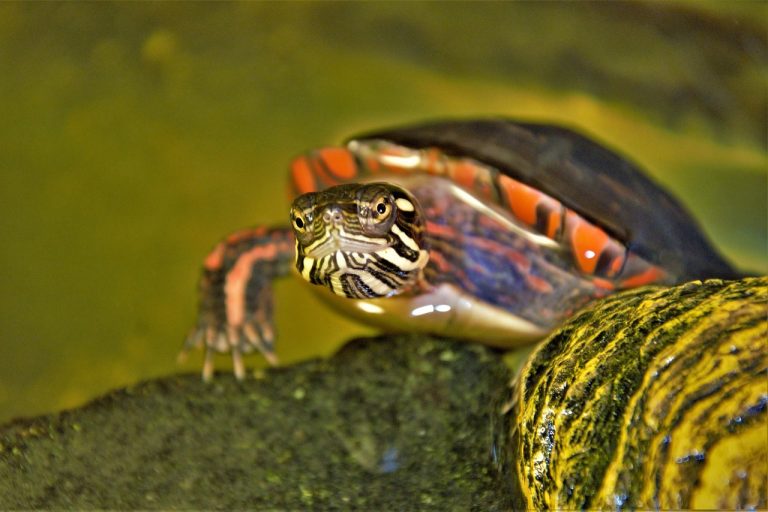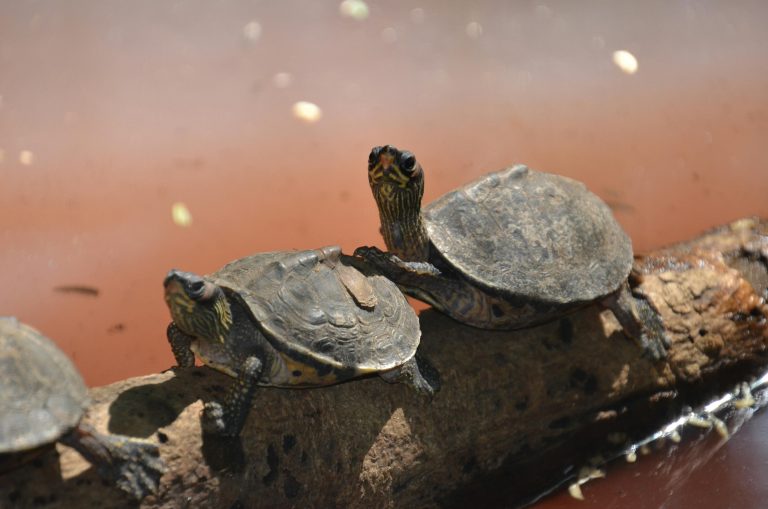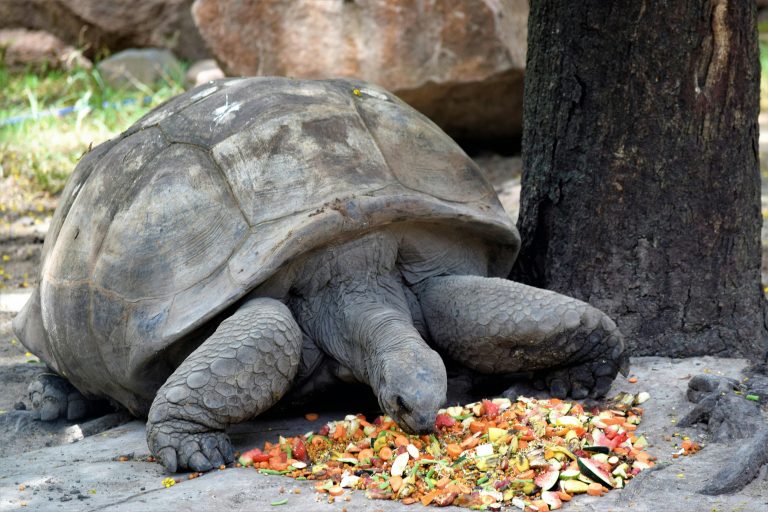Box Turtle Mating Guide: How It Happens?
You might already be the proud owner of some box turtles, and it’s no wonder if you find them utterly irresistible. Breeding your pet turtles to expand your collection is a tempting idea, but simply putting a male and female together won’t guarantee fertile eggs. Box turtle mating can be quite intricate, especially for novice breeders.
To increase your chances of successfully breeding your male and female box turtles, it’s crucial to understand their mating behavior better. In this article, I’ll guide you through the timing and process of box turtle mating, enabling you to create optimal conditions for your turtles to reproduce.
What Age And Size Do Box Turtles Mate?
Box turtles must reach sexual maturity before they are ready to mate. The time it takes for box turtles to reach sexual maturity can vary depending on their subspecies, typically ranging from 5 to 10 years. Factors such as diet, food availability, and overall health also influence this timeline. Generally, a sexually mature box turtle should measure between 4 to 6 inches in length.
For instance, a sexually mature female Florida box turtle may measure between 4.3 to 6.3 inches, while a male may range from 5 to 6.7 inches. Conversely, eastern box turtles typically reach maturity at sizes ranging from 4.5 to inches in length.
Do Box Turtles Have A Mating Season?
Turtle mating seasons vary by species, and for box turtles, it typically occurs in the spring, immediately following their emergence from hibernation. Sexually mature box turtles require the preceding cooling period to prime their bodies for reproduction. They exhibit increased activity during the warmer months of March and April, though mating behaviors can extend throughout the entirety of spring.
If your box turtle isn’t showing signs of sexual activity during the mating season, it’s likely because they haven’t reached sexual maturity. The timing can vary for pet box turtles, especially since they might not hibernate like their wild counterparts.
But experts believe, the cooling season is crucial for a turtle’s reproductive health. So, help your turtle brumate during the fall season if you want them to mate in spring.
How Do Box Turtles Find A Mate?
Upon emerging from hibernation, a sexually mature male box turtle will actively seek out a female partner for courtship. Surveying its territory, the male will search for a sexually mature female turtle. Once a suitable mate is located, the male turtle initiates courtship behaviors in preparation for mating.
In cases where there are more male box turtles than available female turtles, competition among the males intensifies. This can lead to aggressive behaviors such as head-butting, attempts to flip opponents onto their shells, scratching with sharp claws, or biting. Eventually, the dominant male emerges victorious and proceeds to approach the female turtle for courtship.
When breeding box turtles in captivity, you have the advantage of controlling the competition. If you only have one male and one female box turtle in the enclosure, there’s less concern. However, if multiple mature box turtles inhabit the same enclosure, it’s prudent to separate the intended breeding pairs into a separate enclosure.
Select the healthiest pairs for breeding, as the mating process can be demanding for both male and female box turtles. After mating, it’s advisable to keep the male turtle separate from the female. Male turtles tend to remain active and may persistently bother the female turtle.
What Happens When Box Turtles Mate?
Male box turtles may display their colorful necks as a means of impressing female turtles during courtship. They might delicately tickle the female turtle’s head with their front claws as part of their courtship behavior. If the female turtle is interested, she may reciprocate the gesture.
However, there are instances when a female box turtle may not be receptive to mating. Male box turtles are typically larger than females and can exhibit enthusiasm during mating attempts, potentially leading to accidental injury to the female. In such cases, the female may attempt to hide from the persistent male.
If the male box turtle becomes more aggressive in pursuit of mating, he may resort to chasing the female. Upon catching up to her, the male may bite at her shell, head, or neck. In some cases, male turtles may even attempt to flip over the female onto their backs before pushing them upright again.
When the female turtle is receptive to mating, the male turtle mounts on top of her. To maintain its position, the male turtle secures its toes onto the shell of the female box turtle. In some cases, a willing female turtle may assist the male by aiding in the hooking of claws.
How Do Box Turtle Mate?
For those unfamiliar with turtles, the question of how they reproduce often arises. Indeed, turtles possess reproductive organs just like other animals. To comprehend their mating process, it’s essential to grasp their biology.
Both male and female turtles have cloacas located on their tails. This organ serves various functions, including waste elimination and reproduction. During mating, turtles utilize this opening. Subsequently, female turtles also lay eggs through this same opening.
Male turtles typically have thinner and longer tails compared to females. Additionally, the cloaca of a male turtle is positioned farther from the shell, closer to the tail’s end. Conversely, the cloaca of a female turtle is nearer to her shell.
Because of their thinner and longer tails, male turtles can easily connect their cloaca with that of females during mating. To aid in this process, they utilize their hind toes to grip onto the shell of the female turtle.
During mating, a male box turtle may assume a vertical position, sometimes tilting slightly backward toward the ground. This posture can occasionally lead to male turtles falling onto their backs. In such instances, the female turtle may assist by dragging the male turtle. In the wild, many male turtles perish if they cannot flip back over, succumbing to starvation and dehydration. Consequently, the mating process can be physically taxing for both male and female box turtles.
How Long Do Box Turtles Mate?
Similar to other turtle species, the mating process of box turtles can endure for several hours, with durations of up to 3 hours commonly observed. Even after mating, a male box turtle may continue to grasp onto the shell of a female box turtle for a period. This behavior serves to deter other male box turtles from approaching the female.
How Can You Tell If A Box Turtle Is Mating?
Given that turtles are typically shy creatures, it’s crucial to minimize disturbances, especially during the mating process. However, if you need to approach the turtle enclosure during the day for tasks like feeding or maintenance, it’s essential to be mindful of the mating turtles.
To determine if your box turtles are mating without disturbing them, you can observe their behavior from a distance. Look for signs such as the male turtle mounting the female or clasping onto her shell. Additionally, you may notice specific mating behaviors such as neck stretching, claw tickling, or vocalizations from the turtles.
If you suspect that mating is occurring but want to confirm without interrupting, consider installing a discreet camera system near the enclosure to monitor their activities remotely. This way, you can ensure minimal disturbance while still keeping an eye on your turtles.
Indeed, there are several unmistakable signs that your box turtles are mating. One common indication is observing the male box turtle mounted on top of the female, either horizontally or vertically. Pay attention to whether the male’s tail is positioned beneath the female’s shell.
Additionally, you may notice the male box turtle gently bumping into the shell of the female, often accompanied by clicking sounds. Some box turtles may also emit hissing or screeching sounds before and during the mating process, providing further auditory cues. These observable behaviors can help you confirm that your box turtles are indeed mating without needing to disrupt their activities.
Conclusion
By now, you should have a thorough understanding of the box turtle mating process. If you intend to breed box turtles in captivity, it’s essential to grasp the intricacies of their mating behaviors. As evident, box turtles must be in good health to successfully mate. Therefore, diligent care and maintenance of your box turtles are imperative if you aspire to expand their family.


![21 DIY Turtle Tank Ideas For Happy Turtles [Budget-Friendly]](https://spreadhapiness.com/wp-content/uploads/2024/03/turtle-tank-3-768x576.jpg)


